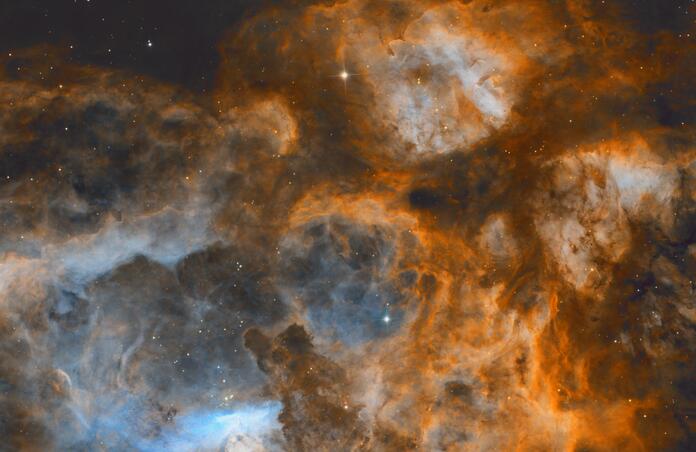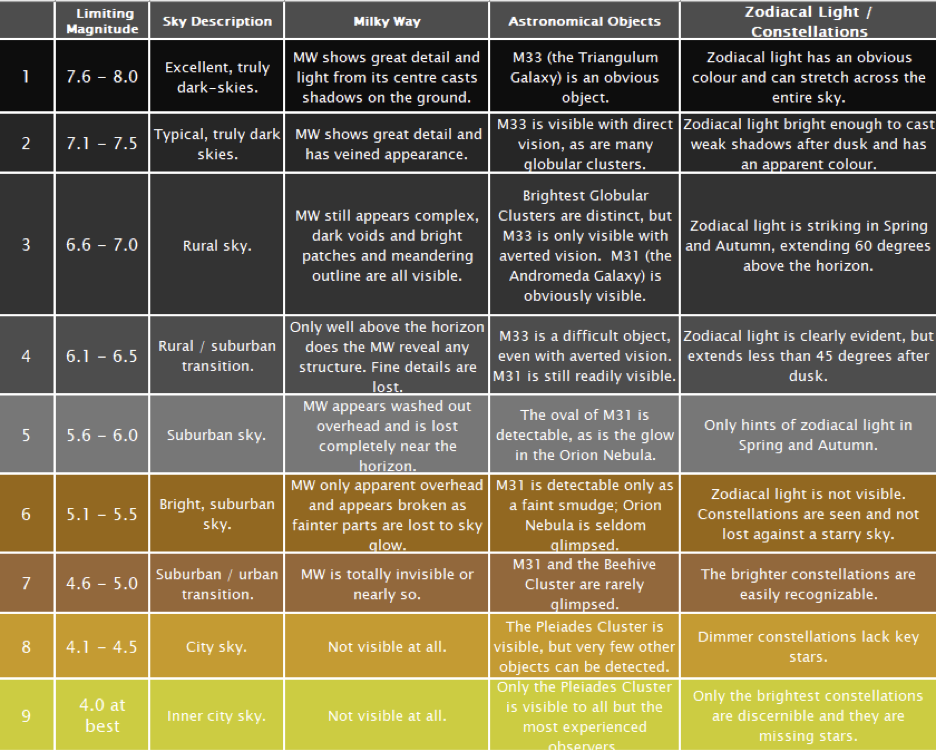The Bortle Scale

The Bortle Scale, a scale quantifying the levels of light pollution brightness in the night sky of an area you’re observing from was created by John Bortle. He published this work in the February 2001 edition of Sky and Telescope Magazine - the article can be found here.
There are 2 purposes for the scale. First, it allows you to evaluate the darkness of a location you’re observing or imaging the night sky from and second, it allows you to compare different sites with each other to determine which site may be more suitable for the observing or imaging session you may be planning.
The scale goes from 1 to 9, where Bortle 1 is an excellent dark sky site and Bortle 9 is a heavily light polluted site in the inner city or metro area. It specifies a Naked Eye Limiting Magnitude (NELM) which are the faintest stars visible to the naked eye. You should also understand that the different scale classes do not correspond to equal ranges of sky brightness. A more precise measure of sky brightness is the Approximate Magnitude per arc sec^2 in which you would need to use a dark sky measuring tool, such as a Sky Quality Meter (SQM).
Below is the scale itself; the first column is the Bortle Scale Class number.

Clear Skies...
Image - RCW 131 1-Click Observation
